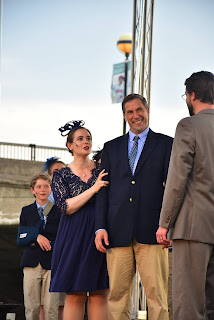With an Indiana bicentennial stamp upon it, Dance Kaleidoscope's "Cole!" returns to the stage

The flippancy, fluency, and observant wit of Cole Porter, always fused in music and words from the same fertile mind, gave David Hochoy a running start when a Dance Kaleidoscope patron suggested long ago that he choreograph some Porter songs for the troupe. The result was "Cole!," revived now and then since its 1997 premiere — I last saw it at Carmel's Tarkington in 2014. It's a two-part piece that centers its tribute to Porter's popularity first on his songs' appeal when they were new ("Ol' King Cole"), then on their adaptability in terms closer to today ("Cole Soul"). A madcap bit of comic relief: "Miss Otis Regrets" A lift of infatuation, or perhaps love, in "It's All Right With Me" Porter's characteristic stance on the malleability of romantic love had a lot to do with the huge impression he made in the early-middle decades of 20th-century America. Social mores got a little looser, and youn









